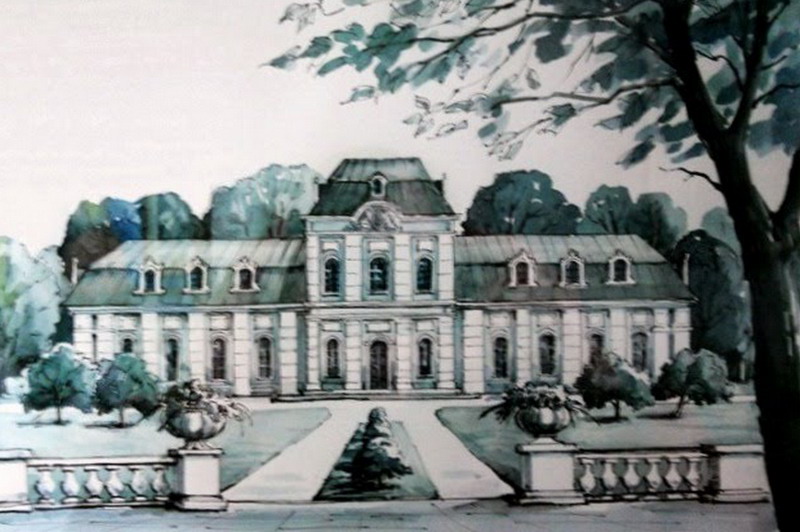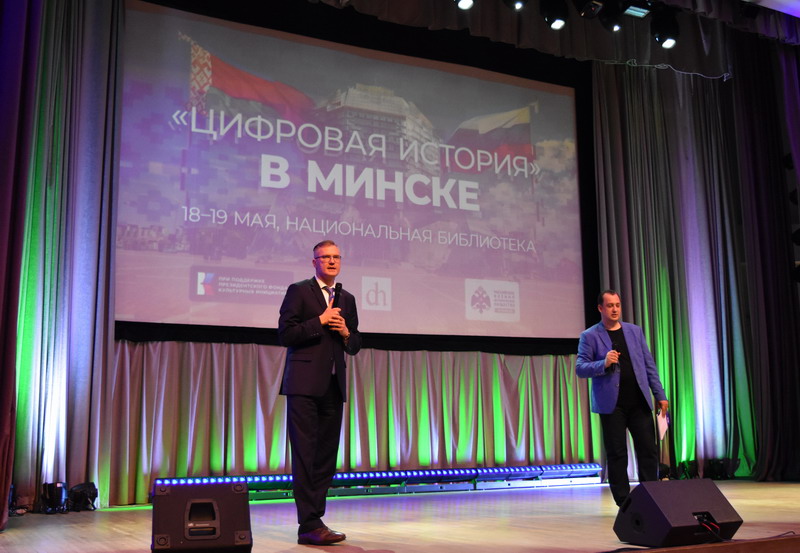Let us recall another glorious date of the Belarusian calendar, the anniversary of which was celebrated last year. 250 years ago, the first performances of the Ahinski Theatre in Slonim took place, a unique phenomenon that had an enormous impact on the development of the theatre culture in our country.
Traditionally, in the final days of the year, we look back, analyse, take stock and look to the future. The Belarusian calendar 2021 was rich in commemorative and anniversary dates, marking milestone events in the history of our country, outstanding people who have left their bright mark in science, national literature, culture and art. In 2021, among the news articles in the column "Through the Pages of the Belarusian Calendar" there were materials devoted to the 280th anniversary of the birth of Jean Emmanuel Gilibert, the founder of the Hrodna Medical Academy; the 240th anniversary of the publisher and bookseller Juzaf Zavadski; the 190th anniversary of the composer Mikhail Jelski; the 160th anniversary of the "patriarch of Belarusian studies" Jauhim Karski; the 150th anniversary of the ethnographer and specialist in folklore Isaak Sierbau; 140th anniversary of the first president of the Belarusian Academy of Sciences Usievalad Ihnatouski; anniversaries of a whole galaxy of writers (Mikhas Charot, Kandrat Krapiva, Vital Volski, Ivan Shamiakin, Ivan Mieliezh, Vasil Vitka, Eliza Azheshka), and many others. These news articles are aimed not only to celebrate their anniversary, but also to promote the collections, electronic information resources, and publishing products of the National Library of Belarus, as well as information products of other libraries, archives, museums, etc.
We would like to conclude our column "Through the Pages of the Belarusian Calendar – 2021" with another anniversary of the outgoing year – the 250th anniversary of the Ahinski Theatre in Slonim, which many researchers believe began its activity in 1771.

The creation of the largest cultural centre in Belarus in the second half of the 18th century is connected with the name of Mikhail Kazimir Ahinski (1728–1800), public official of the Polish–Lithuanian Commonwealth, composer, poet and patron of the arts. A representative of an ancient magnate family, Ahinski held positions of Great Royal Deputy Cup-bearer of Lithuania (1744–1748), free Lithuanian clerk and major-general of the Lithuanian army (1748–1764), governor of Vilnia (1764–1768) and hetman of the Great Lithuanian Army (1768–1793). From a young age, he studied music and visual arts. He was quite a good amateur painter and a virtuoso musician. He played the violin, harp, clavichord and clarinet (he took some violin lessons from the famous Italian maestro Giovanni Battista Viotti).
In 1764, Mihail Kazimir Ahinski received the title of governor of Vilnia and a number of estates. The town of Slonim, where he had been headman since 1761, was a valuable part of the dowry of his wife, Aliaksandra Sapieha. In 1767–1783, Ahinski initiated and financed the construction of two roads (Pinsk – Slonim and Pinsk – Valyn) and the famous canal that connected the Baltic and the Black Sea basins. The canal has become a source of pride and economic growth for all of Paliessie. In 1768, on the site of the old Sapiehas' castle, Ahinski built a magnificent palace with an arena, theatre, orangery, printing house, park, court and guesthouses, and other buildings. However, Lithuanian Hetman's favourite creation was the Slonim Court Theatre, which employed professional Italian, French and Polish opera and drama actors, painters, a serf ballet and choir.
From 1776, Mikhail Ahinsky, who was always at his residence in Slonim, embarked on the grandiose construction of a new theatre building (the House of Opera). The theatre was built in stone with a tile roof in the Italian Baroque style around 1775–1781, designed and managed by the Italian architect and theatre designer Innocenzo Moraino, and was a massive rectangular building with a two-coloured hall and a deep stage with two wings adjoining it. It was located between the palace and the diversionary canal stretching from Shchara. The hall was probably two-storeyed, like the rest of the theatres in the magnate estates of Belarus.

Mikhail Kazimir Ahinski's Slonim theatre
(drawing-reconstruction by V. Hrynievich). The photo is from open sources
Those who saw it noted that in terms of luxury and splendour the Slonim theatre could have been the pride of any European capital. According to surviving descriptions, it had 27 boxes on both storeys. The most beautiful was the central one, decorated with an ornamental border and topped with a cartouche bearing the royal coat of arms. A sumptuous crystal chandelier was placed in the centre of the ceiling, flanked by numerous ceiling and wall lights. The total capacity of the venue was around 1,000 people (incidentally, this is almost comparable to the capacity of our National Opera and Ballet Theatre, which seats 1,200). The spectator entered the stalls through a high door, and wooden stairs to the boxes ran down both sides of the hall.
However, the highlight of the Slonim theatre was the stage. Its mechanics, size and functionality were astonishing. The stage was adapted for baroque ballets and operas with scenes of stage transformations in which hundreds of actors and extras could be involved. The large stage was constructed according to the latest technology and allowed for the most elaborate plays and ballets, theatrical equestrian battles and water extravaganzas. To add to the magic of the show, special lamps illuminated the water area, the backstage area and the two spouting fountains on stage to enhance the extravaganza. The performances were made even more spectacular by the complex machinery that was located underneath the theatre, which made it possible for characters to suddenly appear and disappear, quickly change scenery, and so on. During the summer, much of the stage was flooded with water from the canal and real, not prop, boats, floated in front of the audience. There were even fountains illuminated with sparklers. A large number of theatre technicians, decorators, architects and pyrotechnicians were involved in keeping the theatre's technical systems up to standard. The staff also included a tailor, a hairdresser, a prompter, a carpenter, an usher, two parquet floor technicians, two cloakroom attendants and a fireworks master.

Oginsky (Ahinski) Canal in Slonim. The early 20th century. The photo is from open sources
The theatre staged the typical European repertoire of the time, comparable to that of musical theatres in Milan, Vienna, Paris, Mannheim, Stuttgart and elsewhere. According to preserved records, the repertoire included 61 operas, 18 ballets (10 of them unfinished) and three musical comedies. That's 82 performances staged over a period of about 15–20 years (an average of six performances a year). Even by modern standards, this is a pretty solid repertoire.
But the Great Hetman's main pride was his orchestra. All of Ahinski's performers were under contract and received regular salaries. At the turn of 1774–1775, the orchestra in Slonim had 12 performers. By 1776, however, the number of musicians in the orchestra had increased to 53. Few people at the time could afford such a line-up of musicians. Moreover, a music school was opened at the theatre to train singers and musicians, as well as piano classes. In addition to music and singing, they taught counting and writing there. There was also an Italian language teacher who worked with both opera primas and choir singers.
Alongside opera and symphonic music, from June 1777, Ahinski begins to develop ballet at his theatre. At first, it was a small group (4 men and 4 women), but very soon the number of ballet dancers exceeded 20. In 1781, a ballet school was opened at the theatre, which was housed in a separate building with rehearsal rooms and classrooms. The students themselves lived in separate houses built for the purpose. By 1785, 18 pupils were already receiving choreographic training at the school. After completing their training, the young dancers formed the core of the theatre's ballet troupe.
Thus, by the beginning of the last decade of the 18th century, Slonim, thanks to the efforts of Mikhail Kazimir Ahinski, became one of the biggest music centres in Eastern Europe, with a brilliant orchestra, an outstanding opera troupe and a superb ballet. According to contemporaries, the Slonim theatre worked hard and there were months when performances were given every day. In those days Slonim was called the "Athens of Paliessie", where artists and their admirers, rich nobles from all over the region, would come to celebrate the holidays.
But the partition of the Polish-Lithuanian Commonwealth did not spare Slonim. The city began to decline at an unprecedented speed. The orchestra, opera and ballet troupes were disbanded. The palace complex was abandoned and deserted, gradually becoming a ruin. Ahinski spent the last years of his life at his residence near Warsaw. Yet the Slonim Theatre, which he founded, is still regarded as a unique phenomenon that played a major part in the development of professional theatre and music in Belarus.

In modern Slonim, a memorial plaque has been placed on the building of the Slonim Drama Theatre in memory of Mikhail Kazimir Ahinski (sculptor L. Bohdan, 2014). And in November 2019, a monument was unveiled in the centre of Slonim.

More information on the rise and fall of the Athens of Paliessie can be found in a remarkable book by the art historian, museologist and patron Andrzej Ciechanowiecki "Mikhail Kazimir Ahinski and his Estate of Muses", published in German in 1961 (translated into Belarusian in 1963 and republished in 2006). The book is unique because it is a study based on previously unknown archival material.
The Electronic Catalogue of the Library also provides information on other publications on the subject. The information in the online encyclopaedia "Belarus in Persons and Events" will also be useful.
We also draw the attention of users to the video "Mikhail Kazimier Ahinski. Serving the Muses" (written by T. Sukhockaja, directed by A. Lieskin).
The Bibliology Research Department, which provides materials for the column "Through the Pages of the Belarusian Calendar", wishes colleagues and readers of the National Library of Belarus a Happy New Year 2022. We wish everyone wellbeing and good health, new and surprising discoveries and exciting journeys through the pages of our country's rich and sometimes unexplored history.










